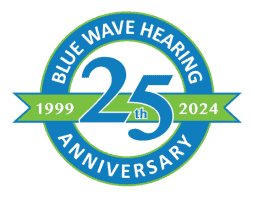- Alcohol and Hearing Health - April 9, 2025
- How Smoking Can Harm Your Ears - March 11, 2025
- Succeeding in the Workplace with Hearing Aids - February 10, 2025
Hearing is a delicate dance between your ears and your brain. This dance isn’t possible without hair cells, which transmit sound signals to your brain to be interpreted as sound. If these cells are damaged, you begin to lose hearing, and these cells can’t be replaced.
However, the authors of a recent article in the journal Cell Reports think they may be able to encourage growth of new, viable hair cells in the inner ear, thereby restoring hearing. It’s not science fiction, but it could be science future. In the meantime, we’d like to tell you how simple it is today to maintain your hearing health.
Protect Your Ears From Damage
The most preventable form of hearing loss is noise-induced hearing loss. If harmful levels of noise can’t reach your hair cells, they can’t harm your hair cells. Avoiding loud noise is the easiest way to protect your hearing, but we offer hearing protection for most leisure or work situations:
- Custom-fit earplugs
- In-ear studio monitors for musicians
- Custom-fit musicians’ earplugs and headphones
- Custom-fit hunters’ earplugs and headphones
- Swimmers’ earplugs
Get Your Hearing Tested
Hearing loss is cumulative, so even if you think your hearing is fine, it pays to get your hearing tested as a preventive measure. Hearing care isn’t always about hearing devices: There are simple, easily fixed causes of hearing loss, such as excess earwax buildup, another kind of object blocking the ear canal, or certain kinds of medication that can affect your hearing.
Our testing process is simple but thorough.
- The interview.
We ask a series of questions to learn whether there are areas of concern or possible sources of the hearing loss. Our questions cover topics such as hearing issues in your family, your workplace noise levels, medications you’re taking, and any illnesses or injuries that might contribute to or cause your hearing loss. - The examination.
We take a look inside your ear to determine whether you have an ear canal obstruction, damage to the eardrum, or some other physical cause for the hearing loss. - The hearing test.
We’ll conduct a hearing screening. Based on those results, we might do a pressure test on your middle ear or a speech assessment to measure how well you understand regular conversations. - The treatment options.
As stated before, you could simply have something blocking your ear canal; in that case, we’d remove the culprit. In other situations, you may need technology of some sort. Every person’s hearing loss is different. If you need technology, we make sure we understand your hearing lifestyle and then recommend the most appropriate device for your unique situation.
Hearing care is always evolving. Contact us today if you’d like to learn more about ways to optimize your hearing health.
McLean WJ, et al. Clonal expansion of lgr5-positive cells from mammalian cochlea and high-purity generation of sensory hair cells. Cell Reports. 2017;18(8):1917–1929.


